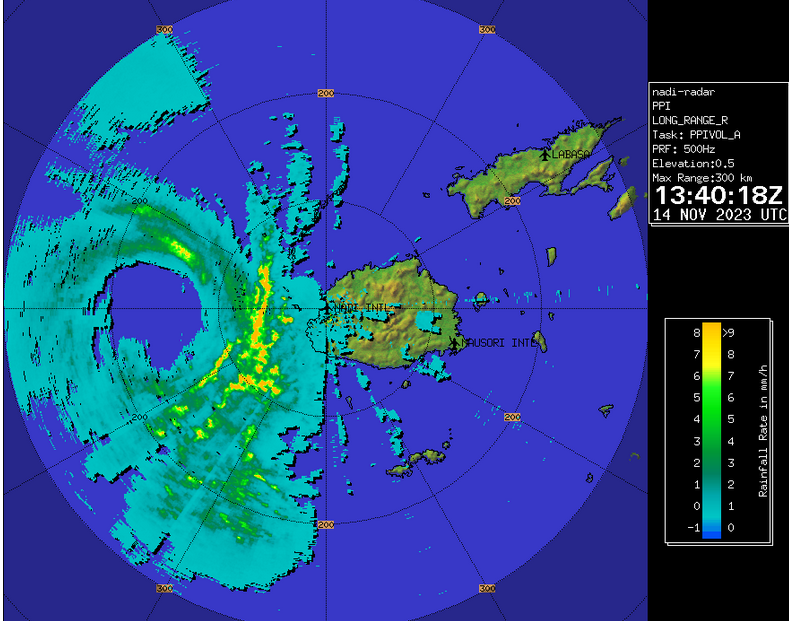Tropical Cyclone Awo formed over the South Indian Ocean west of Diego Garcia on Thursday. At 11:00 a.m. EDT on Thursday the center of Tropical Cyclone Awo was located at latitude 7.0°S and longitude 60.5°E which put the center about 1000 miles (1615 km) north-northeast of La Reunion. Awo was moving toward the west-northwest at 12 m.p.h. (19 km/h). The maximum sustained wind speed was 40 m.p.h. (65 km/h) and there were wind gusts to 50 m.p.h. (80 km/h). The minimum surface pressure was 1002 mb.
A low pressure system over the South Indian Ocean west of Diego Garcia strengthened on Thursday morning and Meteo France La Reunion designated the system as Tropical Cyclone Awo.
More thunderstorms formed near the center of Tropical Cyclone Awo on Thursday morning. Thunderstorms were also occurring in bands in the western side of Awo’s circulation. Bands in the eastern side of Tropical Cyclone Awo consisted primarily of showers and lower clouds. Storms near the center of Awo generated upper level divergence that pumped mass away to the west of the tropical cyclone.
The strongest winds were blowing in the southern half of Tropical Cyclone Awo. Winds to tropical storm force extended out 80 miles (130 km) in the southern side of Awo’s circulation. The winds in the northern half of Tropical Cyclone Awo were blowing at less that tropical storm force.
Tropical Cyclone Awo will move through an environment that will become unfavorable for intensification during the next 24 hours. Awo will move over water where the Sea Surface Temperatures are near 25°C. It will move under the northern part of an upper level ridge over the South Indian Ocean. The upper level ridge will produce easterly winds that will blow toward the top of Awo’s circulation. Those winds will cause moderate to strong vertical wind shear. The combination of cool Sea Surface temperatures and moderate to strong wind shear will cause Tropical Cyclone Awo to weaken during the next 24 hours.
Tropical Cyclone Awo will move around the northern side of a high pressure system over the South Indian Ocean. The high pressure system will steer Awo toward the west during the next 24hours. On its anticipated track, Tropical Cyclone Awo will remain far to the north of La Reunion.

